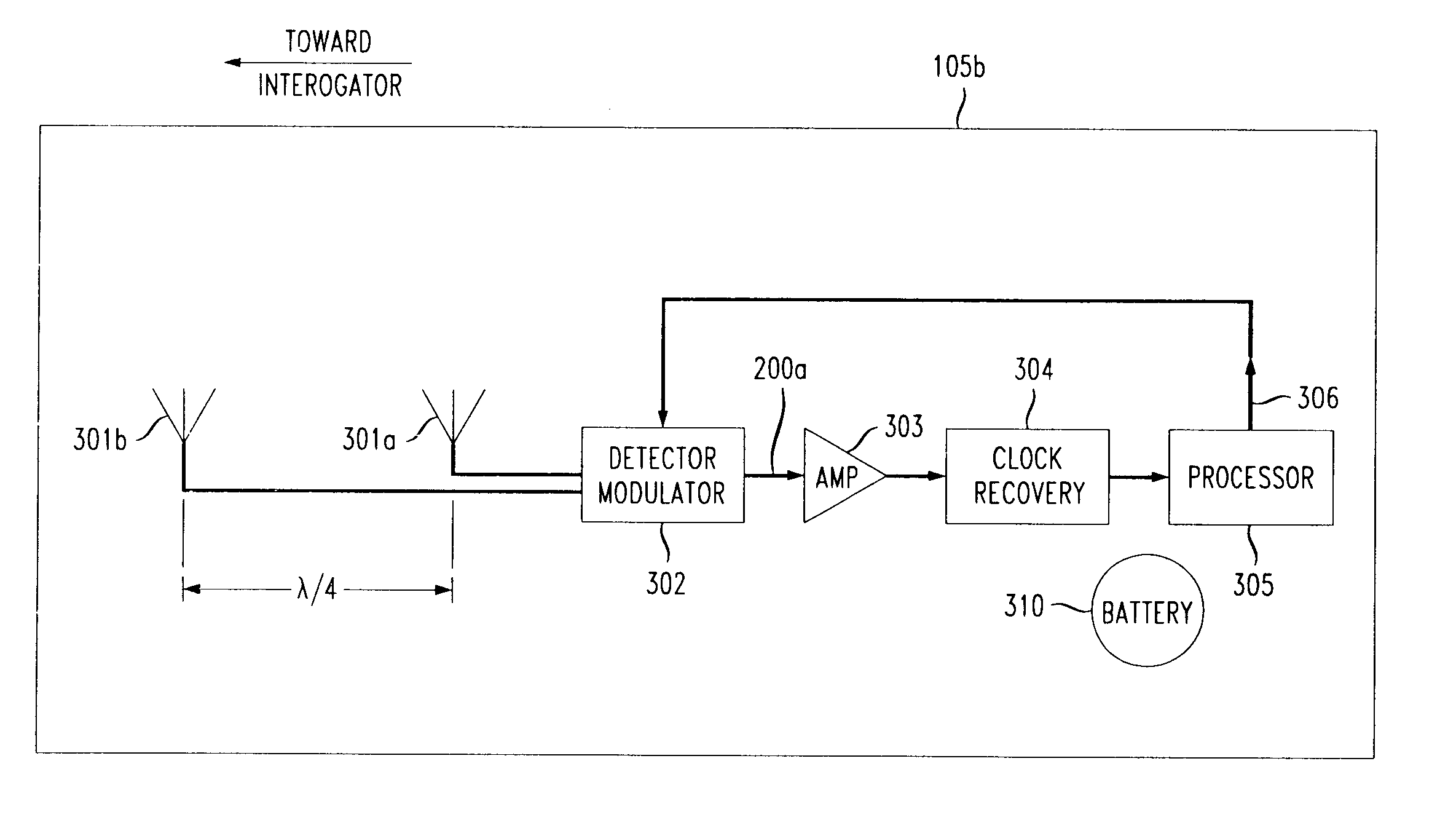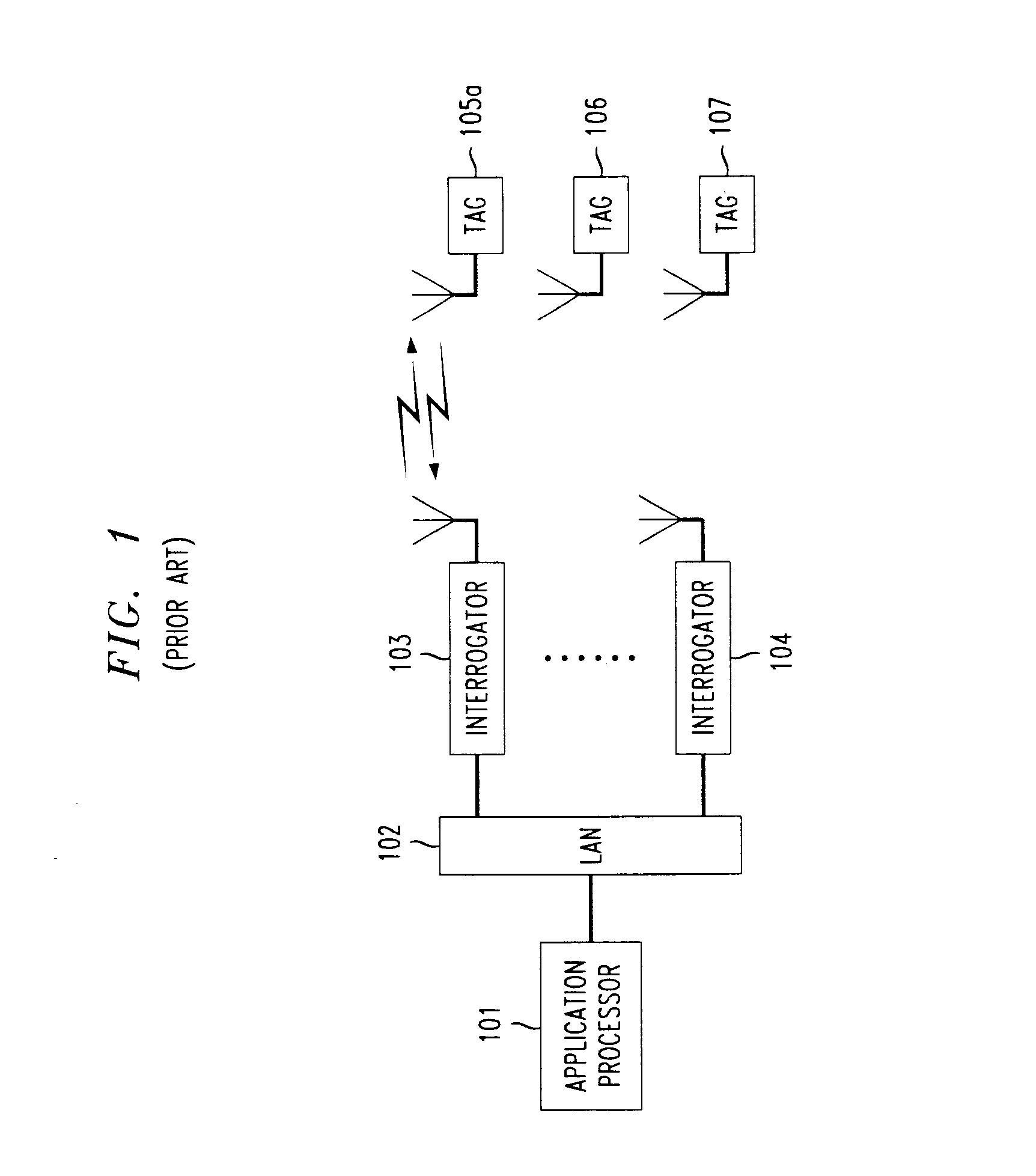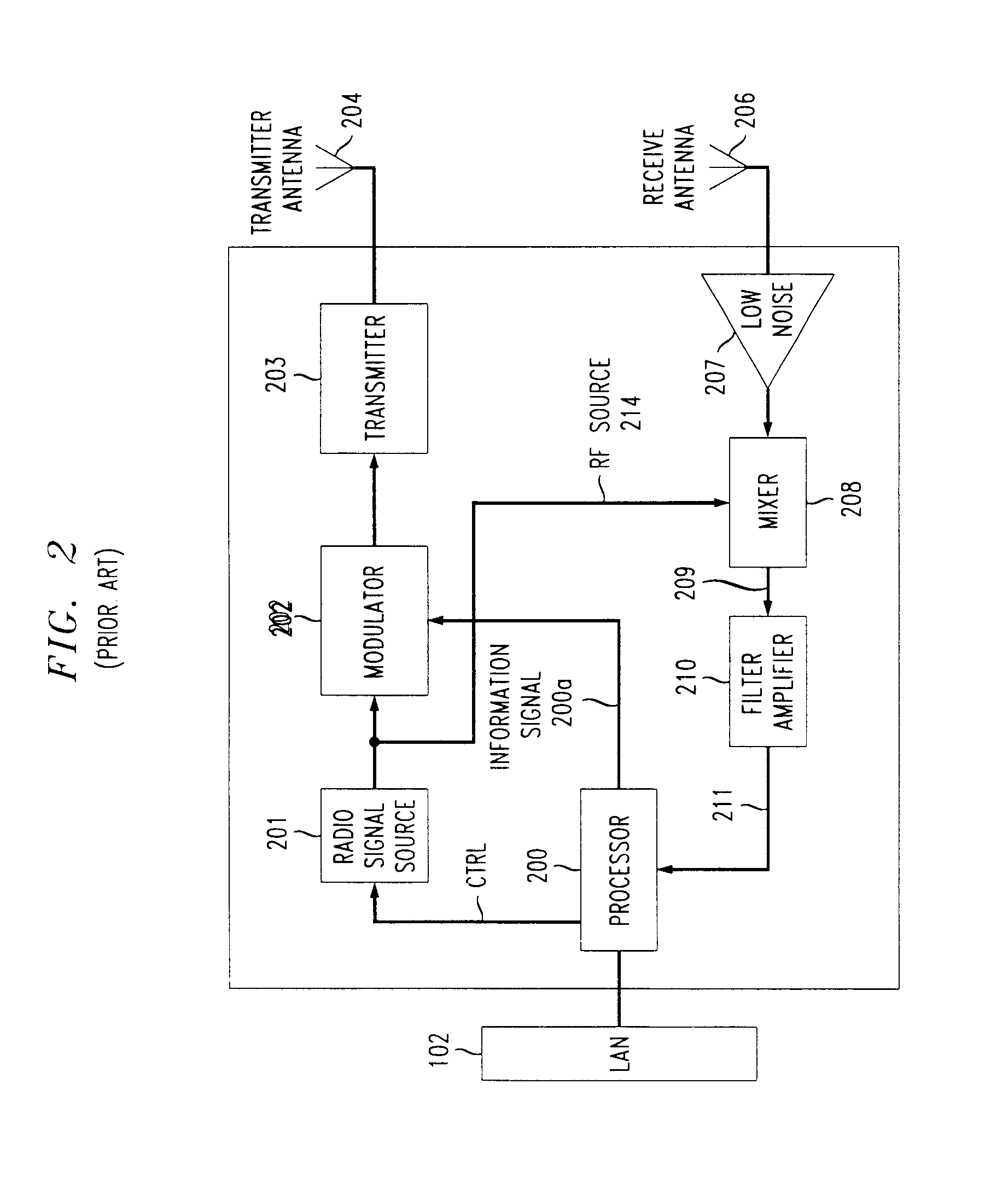Method and apparatus for improving the interrogation range of an RF-Tag
a technology of rf tag and interrogation range, which is applied in the field of wireless communication systems using backscatter, can solve the problems of weak signals returned from rf tags and notably more limited interrogation range of rf tags
- Summary
- Abstract
- Description
- Claims
- Application Information
AI Technical Summary
Problems solved by technology
Method used
Image
Examples
Embodiment Construction
Referring now to FIGS. 3B and 6A, in accordance with an embodiment of the present invention an RF Tag 105b includes a first antenna (reflecting) element 301a and a second antenna (reflecting) element 301b predeterminately disposed with respect to the first reflecting element 301a such that the echo signal of second reflecting element 301b is preferably 180.degree. out of phase with the echo signal generated by first reflecting element 301a. This phase relationship can be achieved by positioning the second reflecting element 301b a distance of approximately one-quarter wavelength (.lambda. / 4) from the first reflecting element 301a and then orienting the RF Tag so the axis of the two reflecting elements points towards the Interrogator. The axial alignment of the two reflecting elements in the direction of the expected incident radiation (i.e., the direction from which the Interrogator interrogates the RF Tag) is required to achieve the 180.degree. phase relationship and therefore a co...
PUM
 Login to View More
Login to View More Abstract
Description
Claims
Application Information
 Login to View More
Login to View More - R&D
- Intellectual Property
- Life Sciences
- Materials
- Tech Scout
- Unparalleled Data Quality
- Higher Quality Content
- 60% Fewer Hallucinations
Browse by: Latest US Patents, China's latest patents, Technical Efficacy Thesaurus, Application Domain, Technology Topic, Popular Technical Reports.
© 2025 PatSnap. All rights reserved.Legal|Privacy policy|Modern Slavery Act Transparency Statement|Sitemap|About US| Contact US: help@patsnap.com



